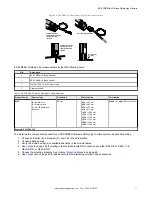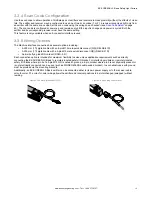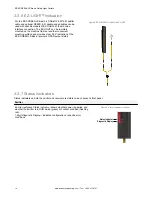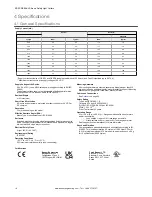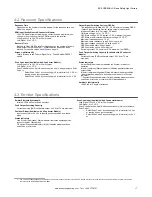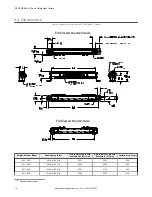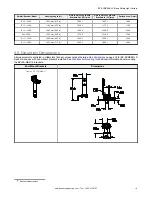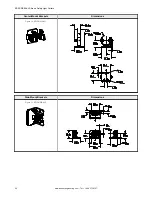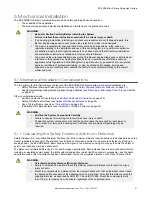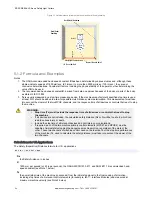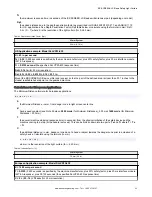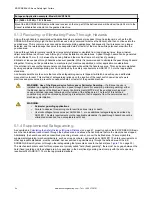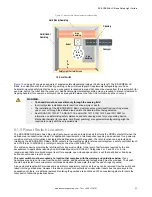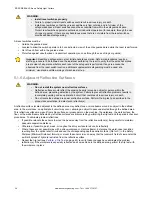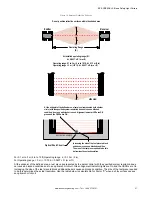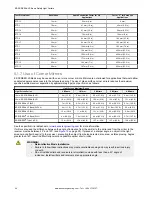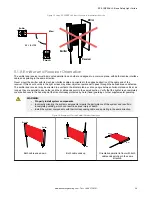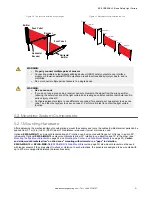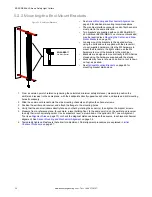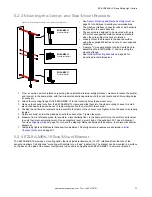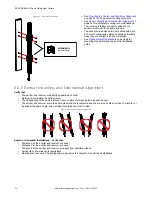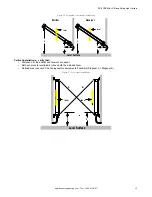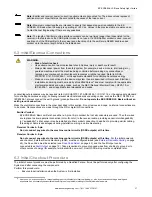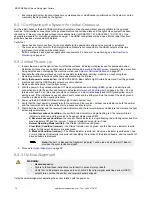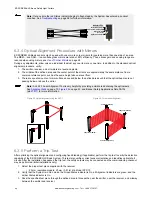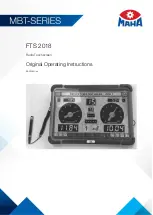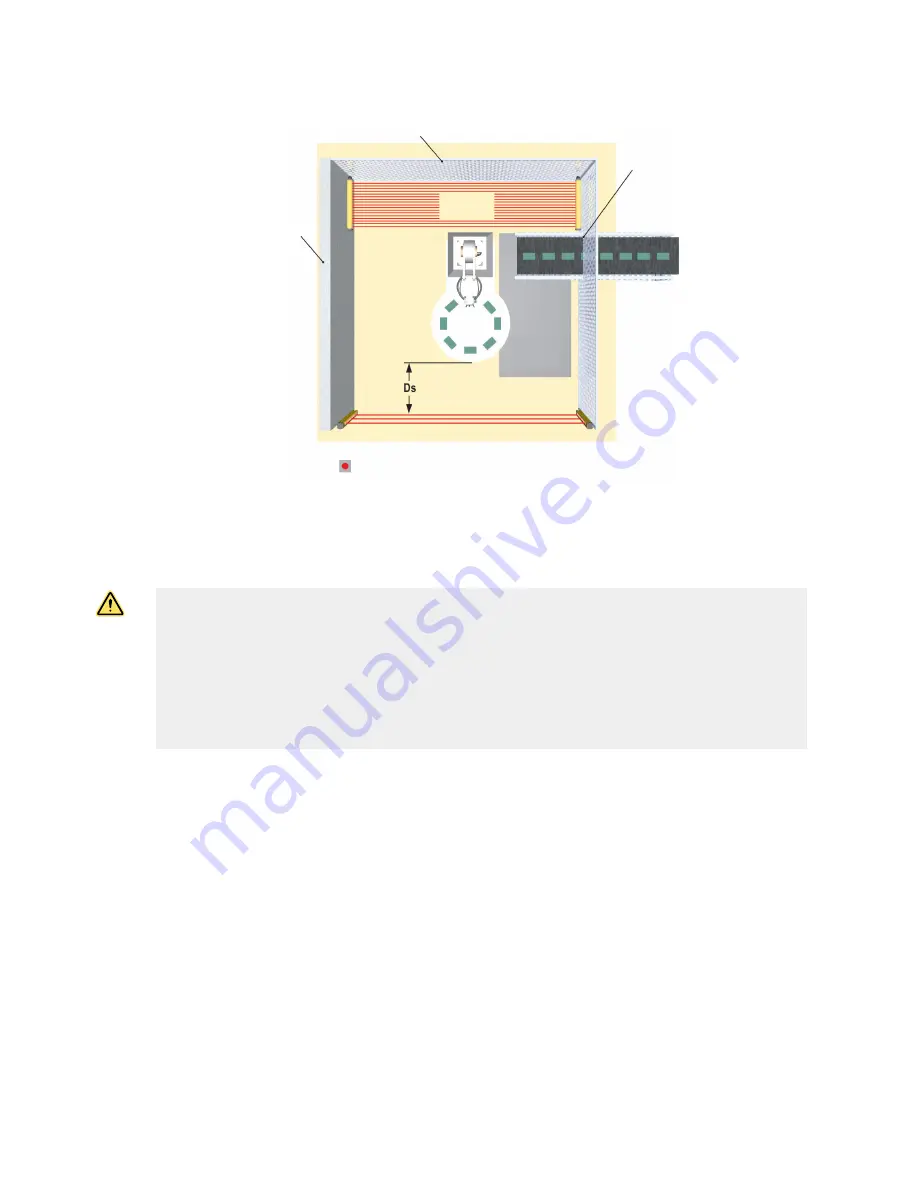
Figure 13. An example of supplemental safeguarding
Hard (fixed) Guarding
Reset Switch
Conveyor
Opening
Area
Guarding
Robot
Turn-
Table
Hard (fixed)
Guarding
Area
Guarding
Safety Light Curtain/Screen
on page 25 shows an example of supplemental safeguarding inside a robotic work cell. The EZ-SCREEN LS
Basic, in conjunction with the hard (fixed) guarding, is the primary safeguard. Supplemental safeguarding (such as a
horizontal-mounted safety light screen as an area guard) is required in areas that cannot be viewed from the reset switch (for
example, behind the robot and the conveyor). Additional supplemental safeguarding may be required to prevent clearance or
trapping hazards (for example, a safety mat as an area guard between the robot, the turntable, and the conveyor).
WARNING:
•
The hazard must be accessible only through the sensing field
•
Incorrect system installation could result in serious injury or death.
•
The installation of the EZ-SCREEN LS Basic must prevent any individual from reaching around,
under, over or through the defined area and into the hazard without being detected.
•
See OSHA CFR 1910.217, ANSI B11.19, and/or ISO 14119, ISO 14120 and ISO 13857 for
information on determining safety distances and safe opening sizes for your guarding device.
Mechanical barriers (for example, hard (fixed) guarding) or supplemental safeguarding might be
required to comply with these requirements.
5.1.5 Reset Switch Location
The EZ-SCREEN LS Basic has a trip output (auto power-up and automatic reset) that turns the OSSD outputs ON when the
defined area is unobstructed (clear). Per application requirements, a latch response requiring a manual reset to a power-up
condition or after an interruption has cleared the defined area might be required. The latch function can be provided by
interfacing the EZ-SCREEN LS Basic OSSD outputs to the machine's safety-related control system, a safety controller (such
as SC10-2roe or XS/SC26-2), or safety module (such as the UM-FA-9A/11A).
The system or device providing the latch/reset function must conform to the level of performance required by the risk
assessment. In applications requiring Control Reliability and/or ISO 13849-1 Categories 3 or 4 and PL d or e, it is
recommended that a monitored manual reset (for example, open-closed-open action), such that a shorted or tied-down
button cannot cause a reset be used.
The reset switch must be mounted at a location that complies with the warning and guidelines below.
If any
hazardous areas are not in view from the switch location, additional means of safeguarding must be provided. The switch
should be protected from accidental or unintended actuation (for example, through the use of rings or guards).
A key-actuated reset switch provides some operator or supervisory control, as the key can be removed from the switch and
taken into the guarded area. However, this does not prevent unauthorized or inadvertent resets due to spare keys in the
possession of others, or additional personnel entering the guarded area unnoticed. When considering where to locate the
reset switch, follow the guidelines below.
EZ-SCREEN
®
LS Basic Safety Light Curtain
www.bannerengineering.com - Tel: + 1 888 373 6767
25

